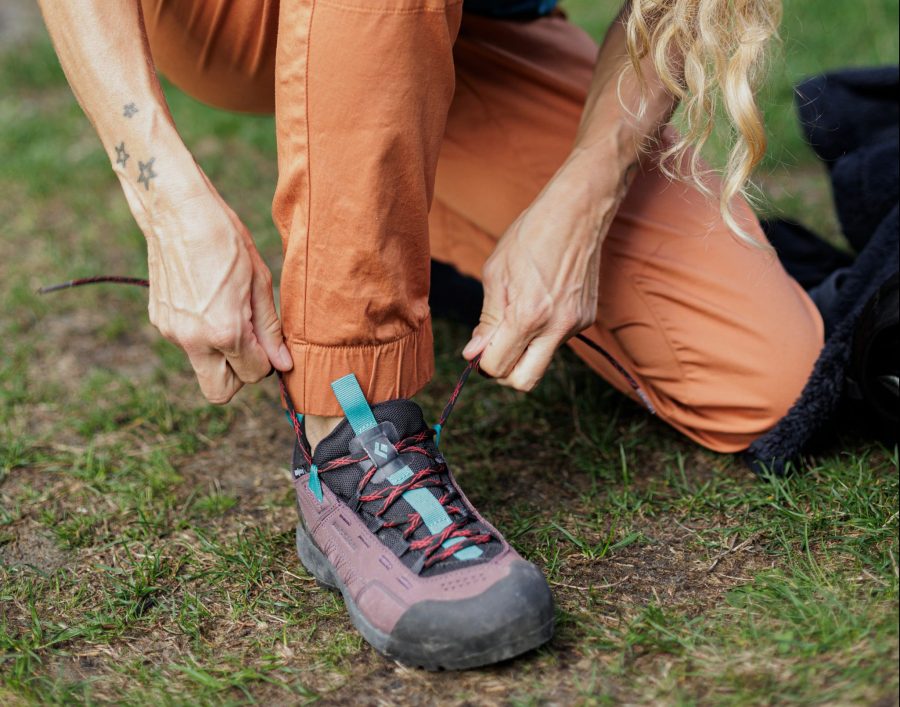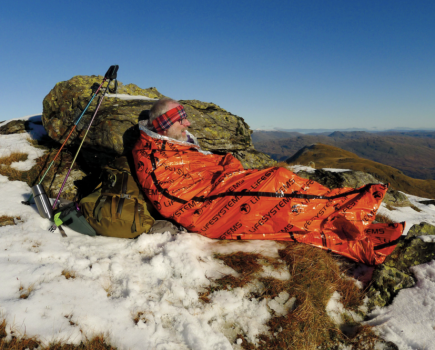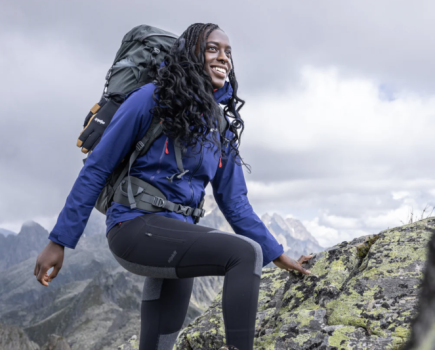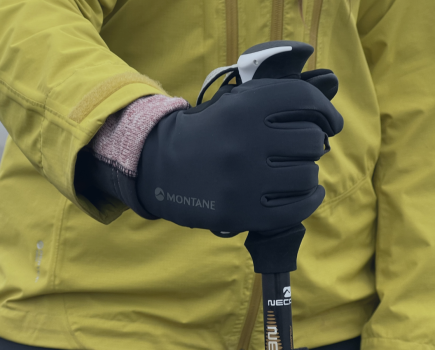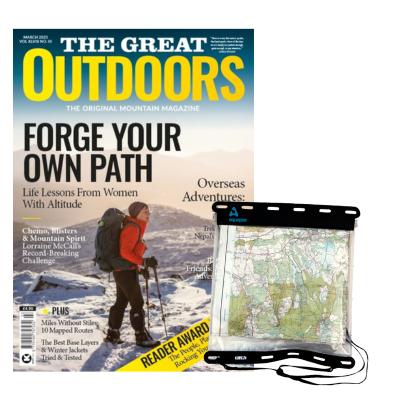Mountain Leader Kirsty Pallas and photographer James Roddie have rounded-up the best scrambling shoes to take you onto higher ground with confidence.
Scrambling shoes are best worn when having an enjoyable few days in the mountains. They are especially needed when we combine walking with scrambling or rock-climbing. Think of the Cuillin ridge traverse, or a long scrambling enchainment in Snowdonia: you will be moving between a wide variety of terrain, from well-made trails to challenging moves on steep rock.
This is where scrambling shoes are the ideal choice of footwear. These are a hybrid of trail shoes, hiking boots and climbing shoes, allowing you to walk long distances as well as negotiate technical rock comfortably and safely. They negate the need to carry dedicated rock shoes for those days when trail shoes won’t quite provide enough grip on the most technical sections.
How do they differ from dedicated hiking and climbing footwear? Scrambling shoes generally have a rubber rand around the toe and heel to protect against abrasion on rock. They have lugged soles, but the lugs will normally be shallower than found on trail shoes. Grip on wet vegetation or mud will often be less than in dedicated trail shoes or boots. The soles are often made of ‘sticky rubber’, similar to or the same as that found on climbing shoes.
There will normally be a dedicated ‘climbing zone’ on the toe – a flat area allowing grip and precise foot placement on rock. The uppers are more cushioned and breathable than found in climbing shoes, and they will often omit a waterproof lining in order to save weight.
By their very nature, scrambling shoes are a compromise. They are not designed for the longest, roughest trails, or the most challenging rock climbs. They hold the middle ground, and some lean more towards one discipline than the other. Consider your intended usage carefully. Precision and excellent grip are crucial if you are tackling long, technical mountaineering routes, particularly on compact or slabby rock. On the other hand, a shoe with a waterproof lining and slightly deeper lugs may be preferable if you have a fondness for remote Scottish scrambles with boggy approaches.
Our picks of the best scrambling shoes
In this guide you will see six of the best scrambling shoes for men and women. Vigorously tested by Kirsty Pallas and Jame Roddie, in the Scottish highlands on mountain trails, forest trails, boggy/heathery hillsides, tarmac roads, scrambles up to Grade 3. We’ve reviewed scrambling shoes from brands such as Scarpa, La Sportiva, Black Diamond, Salewa and many more
- La Sportiva TX2 Evo Leather | $149 / £150 (Available from alpinetrek.co.uk) – Best in test
- Black Diamond Mission Leather Low WP | $169 / £150 (Available from blackdiamondequipment.com)
- Garmont Dragontail Tech GTX | $200 / £160 (Available from alpinetrek.co.uk)
- Scarpa Gecko | $179 / £150 (Available from alpinetrek.co.uk)
- Salewa MS Wildfire Edge GTX | $169.95 / £170 (Available from salewa.com)
- Zamberlan 214 Half Dome Velcro | $249 / £180
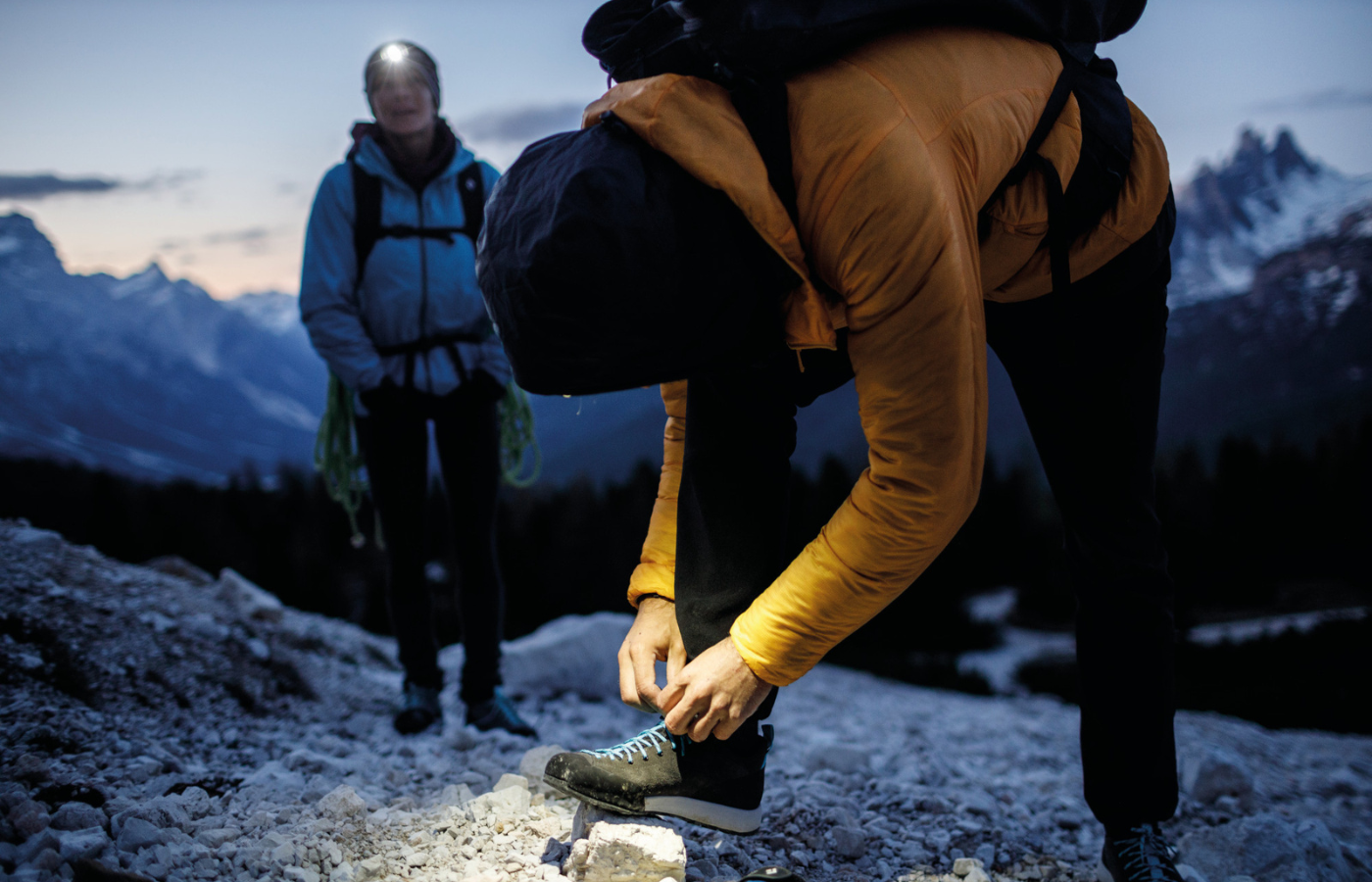
Credit: Scarpa
Features to look for in scrambling shoes
Sole
The sole of a scrambling shoe is one of the key differences from a walking shoe. There is usually a rubber compound that is stickier, and a climbing zone around the toe. Given the main use is scrambling, a sole that is close to a climbing shoe is ideal. This often also means a shallower tread to enhance contact with rock. This can put the wearer at a disadvantage on wet grass and heather (something we’re not short of in Britain), so finding the balance is key. The depth of the midsole is also worth considering; a bulkier midsole will protect us from rocky ground, but might prevent us from feeling little rock edges when we’re scrambling.
Rand
A rubber rand surrounding the shoe is a really useful feature to have when spending time scrambling. It protects the toe and sides of the upper when moving across rocks and through scree, which would otherwise wear out faster.
Lacing
With the similarity to a climbing shoe, looking for a lacing option that goes right down to the toe means you can really adjust the fit well. You also want something that has long enough laces to allow a looser fit for walking in or out, and then a tighter fit for scrambling.
Upper
Different options will come in with slightly different weights and purposes. Some approach shoes will have a leather upper to provide a degree of waterproofing, but will be slightly heavier. Mesh uppers will feel light to wear but may not be as durable in scree and loose ground.
Fit
We ask a lot of scrambling shoes, and so a model that’s versatile is best. A tight fit for scrambling so we can feel the rock plus a looser fit for walking to prevent blisters is a good compromise.
Waterproofing
This really depends on how we intend to use our approach shoe. If it’s for fair-weather days, mostly on rock, then a waterproof membrane needn’t be high on our list. However, the clue is in the name. In Britain, the approach often involve plenty of bog and can involve showers and rain, so waterproofing might be beneficial for comfort.
How we test?
The women’s scrambling shoes were tested by Kirsty Pallas. Kirsty has size 5 feet, with a wide forefoot and low volume. These models were all tested in Scotland whilst waiting for winter to return, in fairly muddy and wet conditions. Ground covered included rocky terrain, bog, and general off path scrub. Shoe weights are per pair, measured on Kirsty’s scales.
The men’s shoes were tested by James Roddie. James is a size 9.5 with narrow heels and a medium-width foot. He tested the approach shoes on a wide variety of terrain in the Scottish Highlands – mountain trails, forest trails, boggy/heathery hillsides, tarmac roads, scrambles up to Grade 3 and rock climbs up to grade Very Difficult. Tests were done in a variety of weather conditions. Shoe weights are per pair, measured on James’s scales.
The best scrambling shoes
Here\s our list of the best scrambling shoes. We’ve looked at three men’s shoes and three women’s giving you plenty to look at, there’s a variety of brands from Scarpa, La Sportiva, Black Diamond, Salewa and more. To find out more about each shoe then please see their full reviews.
La Sportiva TX2 Evo Leather
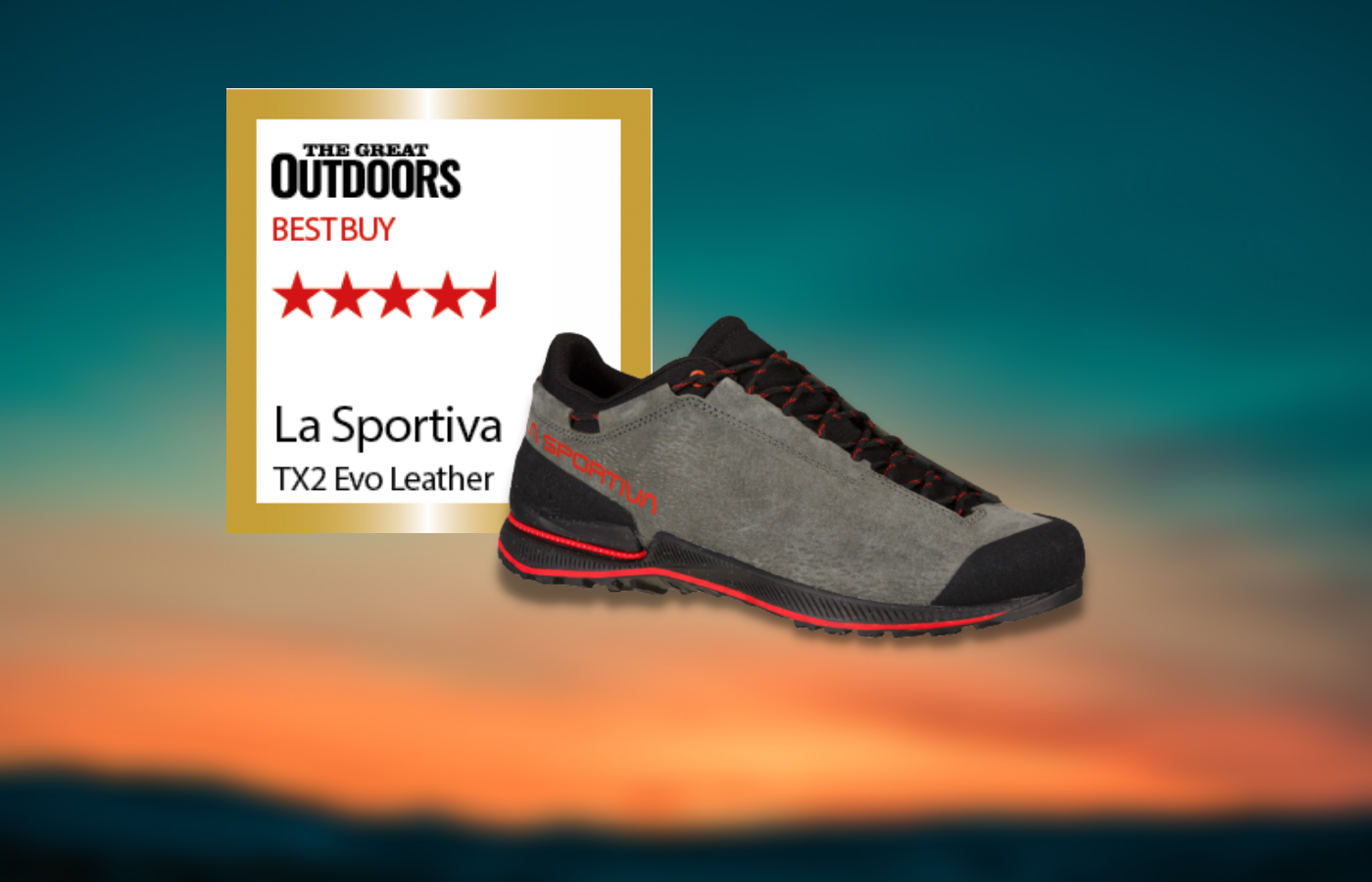
- Pros: Grippy rubber on wet rock, resoleable, thin midsole, weight
- Cons: No waterproof membrane, small rand, no heel brake
- Price: $149 / £150 (Available from alpinetrek.co.uk)
- Weight: 540g (UK size 5)
Materials: suede leather | Features: Vibram Idrogrip sole, PU tech lite rand, caged lacing system | Sizes: UK 3-9 including half sizes | Men’s version: yes
La Sportiva’s TX2 Evo approach shoes feature Vibram rubber, a climbing zone under the big toe, a flexible forefoot but stiffer heel, and a thin midsole. The sole design doesn’t do as well on muddy or heathery descents, but the caged lacing system and suede upper provide some waterproofing. The rand covers the toe and heel, but it doesn’t come round very far. The elastic cord around the heel allows for attachment to a bag or harness.
Read more: La Sportiva TX2 Evo Leather review
Black Diamond Mission Leather Low WP
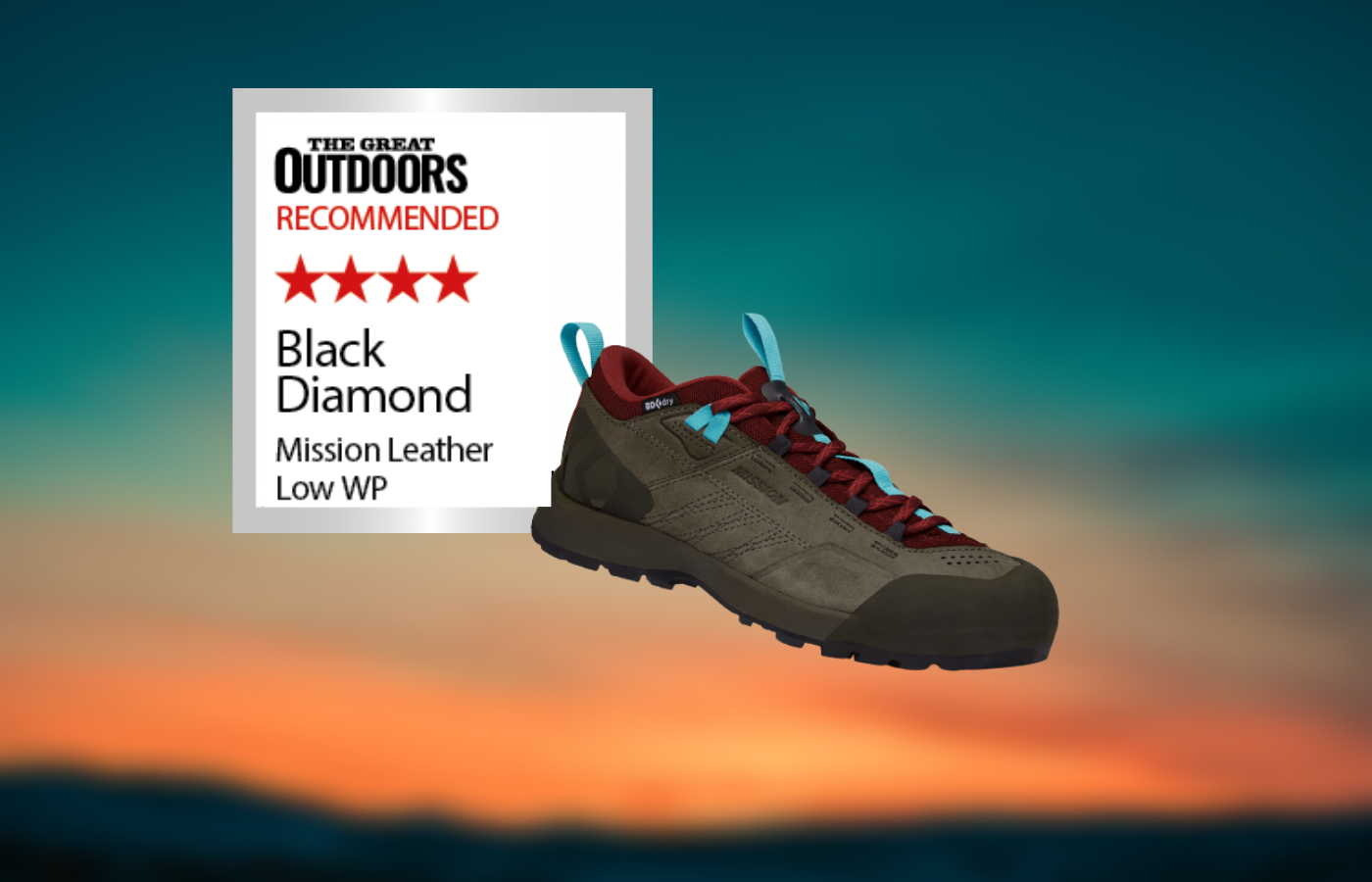
- Pros: Waterproof lining, heel brake on sole, padded ankle
- Cons: Lacing is hard to get tight, stiff midsole
- Price: $169 / £150 (Available from blackdiamondequipment.com)
- Weight: 716g (UK size 5.5)
Materials: nubuck leather | Features: BD Dry lining, BlackLabel-Mountain sole | Sizes: UK 3-8.5 including half sizes | Men’s version: yes
The Mission Leather Low is a durable and well-suited for repeated use on rocky terrain. It features Black Diamond’s own sole compound, medium-depth lugs, a curved heel shank, a chunkier midsole, and a BD Dry membrane. The rand covers the toe and heel sections, but the lacing leaves the foot moving around inside the shoe. With adjustments, it could work well on scrambles.
Read more: Black Diamond Mission Leather Low WP review
Garmont Dragontail Tech GTX
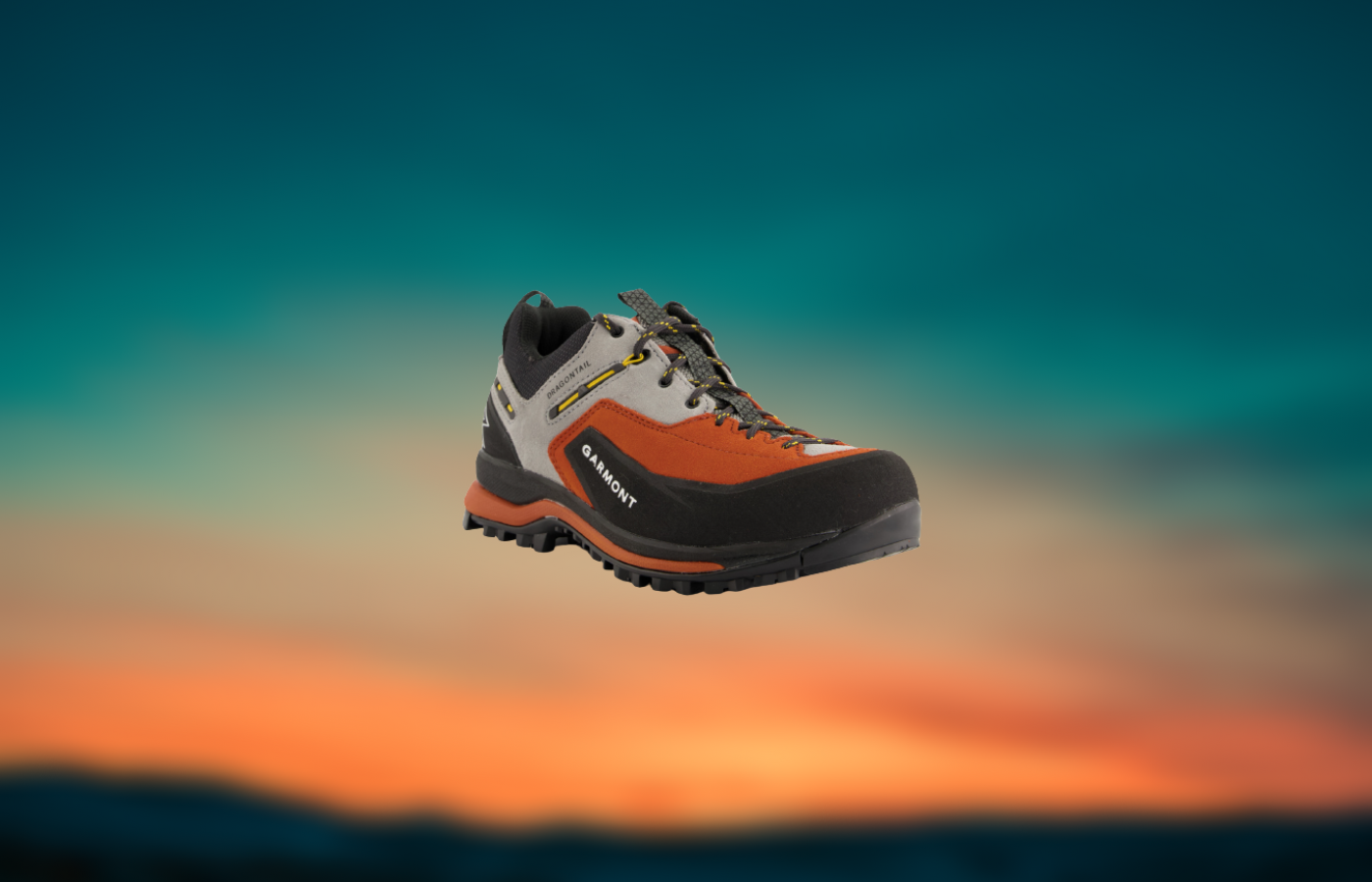
- Pros: Lacing goes down to toe, heel lock system, sizeable rand
- Cons: Bulky sole, stiff midsole, weight
- Price: $200 / £160 (Available from alpinetrek.co.uk)
- Weight: 858g (UK size 5)
Materials: suede leather | Features: Gore-Tex Extended Comfort membrane, Michelin Offroad sole | Sizes: UK 3-9 including half sizes | Men’s version: yes
The Michelin Offroad is a hybrid between a traditional approach shoe and a walking shoe. It has a climbing zone across the toes, deep lugs, and a heel shank. It is stiff and has the biggest midsole, making it bulky for scrambling. The suede on the upper is comfortable and supportive, and the Gore-Tex lining provides waterproofing. The rand extends almost the whole way around the shoe, providing plenty of coverage against wear and tear from sharp rocks.
Read more: Garmont Dragontail Tech GTX review
Scarpa Gecko
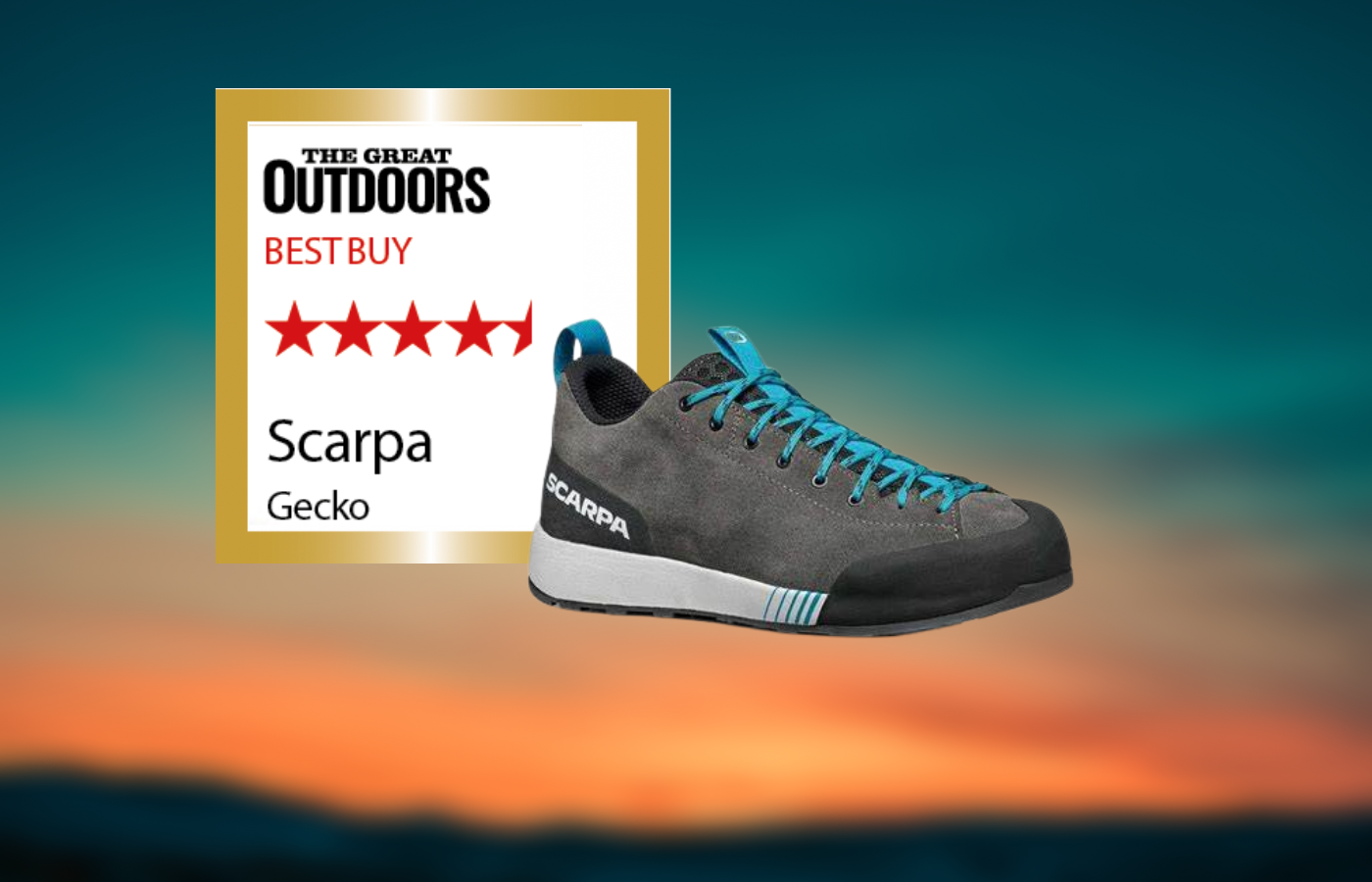
- Pros: Lightweight, comfortable fit, stylish appearance, high performance on scrambles/moderate rock.
- Cons: Grip a little lacking on wet vegetation.
- Price: $179 / £150 (Available from alpinetrek.co.uk)
- Weight: 770g (UK size 9.5)
Materials: PRESA outsole, medium density compressed EVA midsole, water-repellent suede leather upper | Features: protective anti-abrasion rubber rand on the toe, over-lasted on the midsole, TPU protection on the toe and heel, Ortholite foam insoles made from 5% recycled rubber, open mesh on the tongue | Sizes: UK 7-13 including some half sizes | Women’s version: yes
The Gecko shoes are extremely comfortable and lightweight, with a soft foam insole and suede upper. They have a good level of water resistance in damp conditions and are quick to dry even when soaked. The sole has a flat ‘climbing zone’ on the toe, allowing precise placement of feet on small edges. They perform well on climbs up to grade Very Difficult, but have a slight lack of confidence when negotiating wet, steep vegetation.
Read more: Scarpa Gecko review
Salewa MS Wildfire Edge GTX
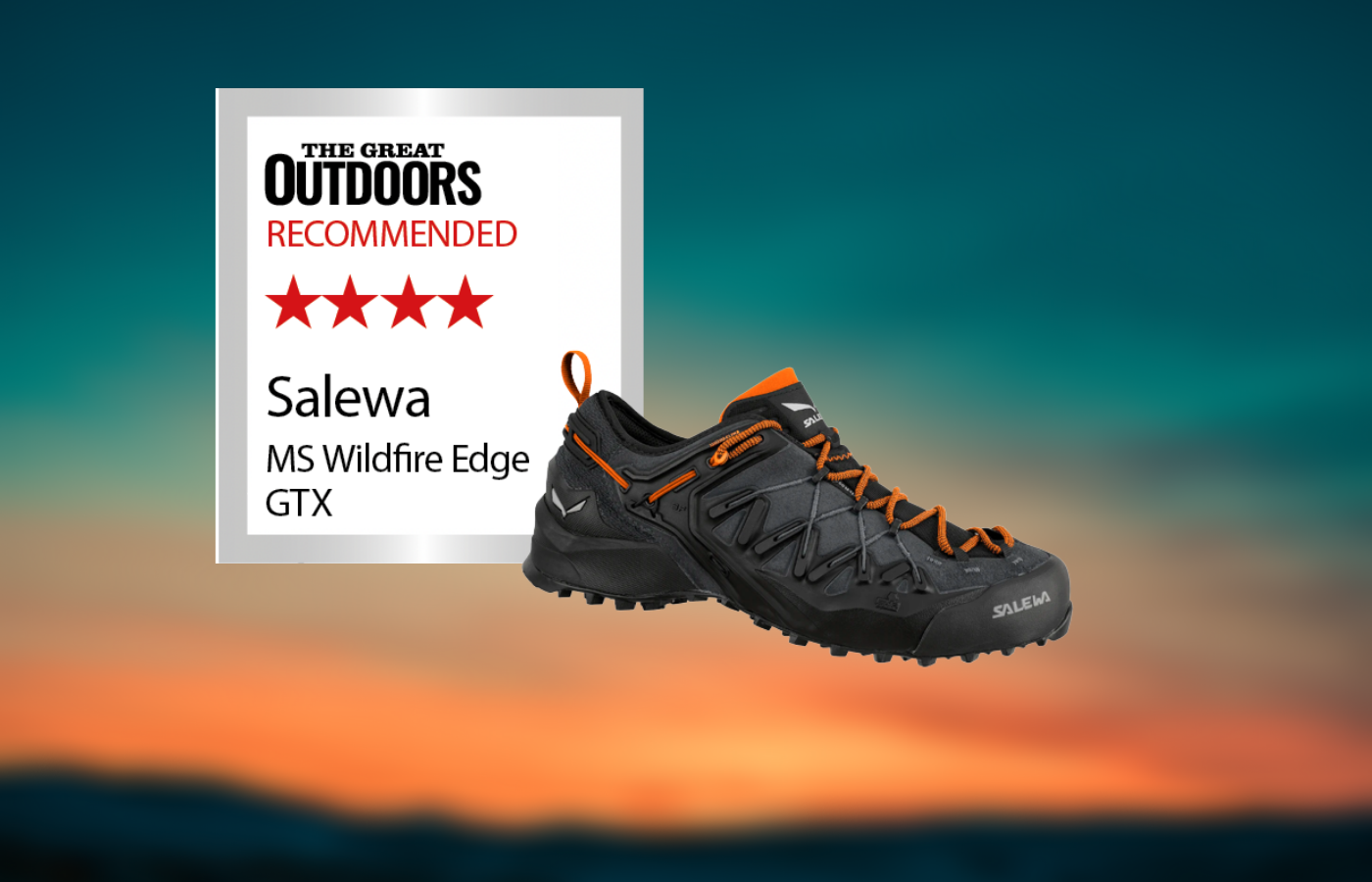
- Pros: Durable, comfortable fit, waterproof, breathable, high performance on scrambles/moderate rock.
- Cons: Relatively heavy
- Price: $169.95 / £170 (Available from salewa.com)
- Weight: 960g (UK size 10)
Materials: butylic compound rubber Pomoca Speed Mtn outsole, EVA midsole, suede leather upper | Features: 3F System with Kevlar cables, exa-shell over injected 3D cage, anti-rock heel cup, MFF+ (Multi Fit Footbed+) insole system, stretch tongue, Switchfit lacing system, Gore-Tex lining | Sizes: UK 6-13 including half sizes | Women’s version: yes
The Wildfire Edge is a feature-packed approach shoe offering durability, comfort and high performance on technical terrain. It has an exa-shell covering areas of the suede upper, a Gore-Tex lining, modular insoles, a Switchfit lacing system, and a large, flat ‘climbing zone’ on the toe. The sole has a large, flat ‘climbing zone’ on the toe, lugs on the sole give great friction, and the lugs on the heels are deeper than at the front.
Read more: Salewa MS Wildfire Edge GTX
Zamberlan 214 Half Dome Velcro
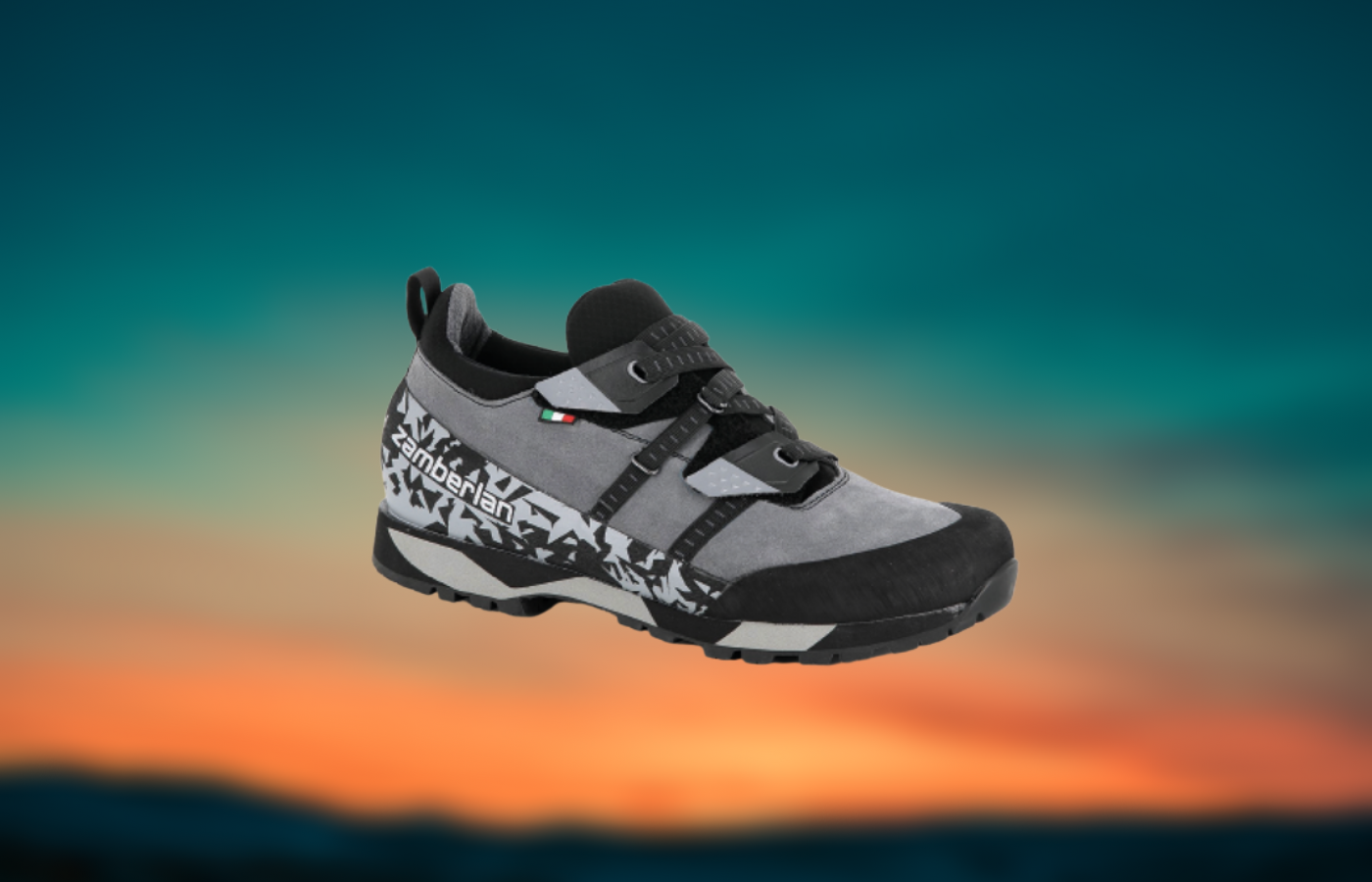
- Pros: Durable, protective, highly water-resistant
- Cons: Unconventional lacing system
- Price: $249 / £180
- Weight: 870g (UK size 9.5)
Materials: Vibram Pepe soul with Megagrip compound, water-repellent Hydrobloc suede leather upper | Features: 360° protective rubber rand, Micrometic Velcro lacing system, nylon insole | Sizes: UK 5-13 including some half sizes | Women’s version: no
This well-made shoe from Zamberlan has a distinctive look and is aimed more towards climbing than hiking. The 360° rubber rand protects the upper from damage from rocks, and the inner is cushioned. The over-foot wrap is not fully stitched to the insides of the upper, and the Velcro lacing system is used. The Vibram sole is grippy with deep lugs, and performed well on a variety of terrain. The toe is more sharply pointed than with some other approach shoes, making it feel secure and precise to use on small holds and edges. This is a strong choice of shoe with great durability and performance, but I wasn’t a fan of the Velcro lacing system.
Read more: Zamberlan 214 Half Dome Velcro

